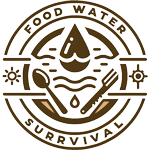Risky Wilderness Water Filtration: Are You Prepared?
You've probably heard tales of adventurers who braved the wild, armed with nothing but their wits and a pocket-sized filter, believing every stream they'd encounter was as pure as bottled spring water.
However, the reality of wilderness water sources couldn't be more different. While you're out there, the water you come across might look clear, but it's often teeming with unseen threats that could turn your adventure into a survival ordeal.
From boiling water to using advanced filtration systems, there are several methods to ensure your water is safe to drink. But are you familiar with the pros and cons of each, and more importantly, do you know which one you'd rely on when push comes to shove?
Stick around to uncover the essentials of water filtration in the wild, and let's ensure you're truly prepared for what lies ahead.
Understanding Water Risks
Dispelling myths about wilderness water sources, it's important to understand that research doesn't support the widespread belief that they're teeming with harmful pathogens. Indeed, studies reveal that only a small fraction of backcountry travelers, about 5.7%, test positive for Giardia without showing any symptoms. This finding challenges the notion that all wilderness water is unsafe.
In fact, dangerous protozoans and bacteria, such as Cryptosporidium parvum, are either not found or present at insignificant levels in many of North America's streams and lakes.
Your perception of the risk associated with wilderness water may be influenced more by the outdoor industry's promotional activities and educational programs than by actual data.
When it comes to treating water, the use of water filtration devices or a reliable water treatment method is often advised not because all raw water is dangerous, but as a precaution against the potential risk of waterborne pathogens.
Water purification techniques, including purification tablets, can provide peace of mind, but it's crucial to base your approach on factual risks, not unfounded fears.
Boiling: A Time-Tested Method
When you're in the wilderness, boiling water is a trusted and effective method for ensuring it's safe to drink. Boil water for at least five minutes to effectively eliminate most bacteria and microorganisms, making it a cornerstone of any water treatment system. This time-tested approach to purification not only makes the water safe but also is straightforward, requiring just a heat source and a container.
To ensure you're well-prepared, keep in mind:
- Bring water to a rolling boil: A vigorous boil for five minutes is crucial for killing harmful organisms, ensuring the water is safe for consumption.
- Allow boiled water to cool: After removing it from the fire, let it sit for another five minutes. This waiting period helps to guarantee its safety.
- Understand the process: Boiling is particularly effective at removing pathogens, making it a highly recommended method for obtaining safe drinking water in the wilderness.
Chemical Purification Explained
While boiling water is a reliable method for purification, exploring chemical water treatment offers an alternative that's both effective and convenient for wilderness adventurers. Chemical purification, involving chlorine dioxide tablets or liquid drops, targets bacteria, viruses, and cysts, making your drinking water safe. Similarly, iodine tablets or liquid serve as a potent method for disinfecting water.
However, patience is key, as these chemical treatments require a waiting period before the water is considered safe to drink. Adhering to the instructions and dosage recommendations is crucial to ensure the effectiveness of the treatment. It's a simple yet powerful way to achieve clean water without the need for a water filter or boiling.
Chemical purification stands out for its portability and ease, especially when filtering water isn't feasible. Whether you're using iodine tablets or chlorine dioxide, these purification devices offer a practical solution to access clean drinking water in the wilderness.
Innovative Solar Techniques
Harnessing the power of the sun, innovative solar techniques offer a groundbreaking approach to purifying water in wilderness settings. When you're engaging in outdoor recreation, ensuring access to safe drinking water is paramount.
Solar methods transform the way you meet your water needs, providing solutions that are both eco-friendly and efficient. These strategies utilize the sun's abundant energy to produce fresh water from sources that might otherwise be unsafe or unsuitable for consumption.
Here's how they're revolutionizing water treatment in the backcountry:
- Solar distillation harnesses sunlight to evaporate water, leaving behind harmful minerals and contaminants, then condenses it back into clear water.
- Solar stills collect and distill water, making it possible to purify even in remote locations without traditional resources.
- Solar-powered UV light devices disinfect water by eliminating pathogens, ensuring the water you drink is safe.
Essential Filtration Gear
In any wilderness adventure, equipping yourself with the right water filtration gear is crucial for ensuring access to safe drinking water. Essential filtration gear includes a variety of tools designed to remove contaminants and make your water safe for consumption.
One of the simplest methods to purify water is to boil your water, but this requires a heat source and time. For situations where boiling isn't feasible, having tablets or drops in your Survival Kit can be a lifesaver, offering an easy to use solution to treat water quickly.
For clearer but questionable water sources, a water filter designed to handle murky water can be indispensable. These filters are designed to prevent water-borne diseases by removing bacteria and protozoa.
Additionally, carrying a durable water container is essential to store your treated water, especially in scenarios where access to water is limited or in the aftermath of a natural disaster.
Conclusion
In conclusion, ensuring you're prepared with knowledge and gear for water filtration in the wilderness is crucial. Boil water when you can, explore chemical purification, and don't overlook innovative solar techniques.
Equip yourself with essential filtration gear like straw filters, pump-action, and drip/suction devices. Remember, even the clearest water can harbor dangers.
Stay informed, stay prepared, and you'll significantly reduce your risk of waterborne illnesses. Safe adventures begin with taking the right precautions.
